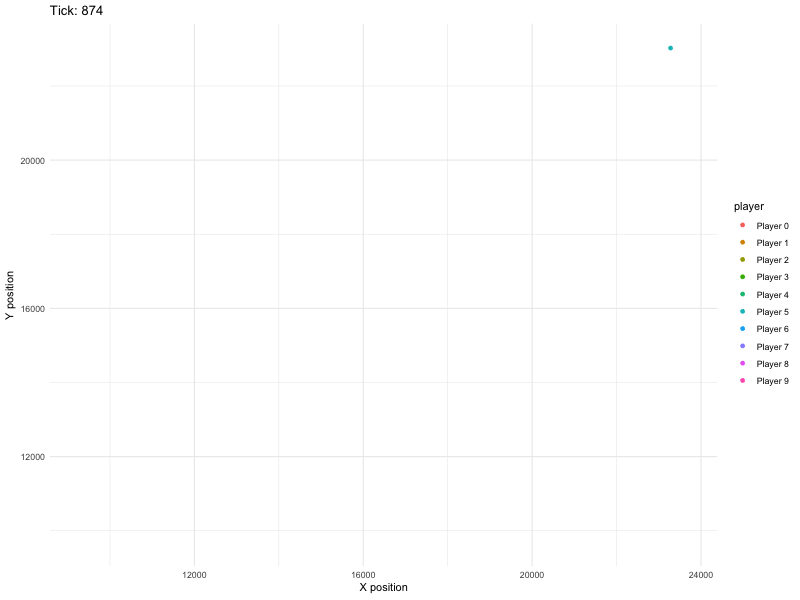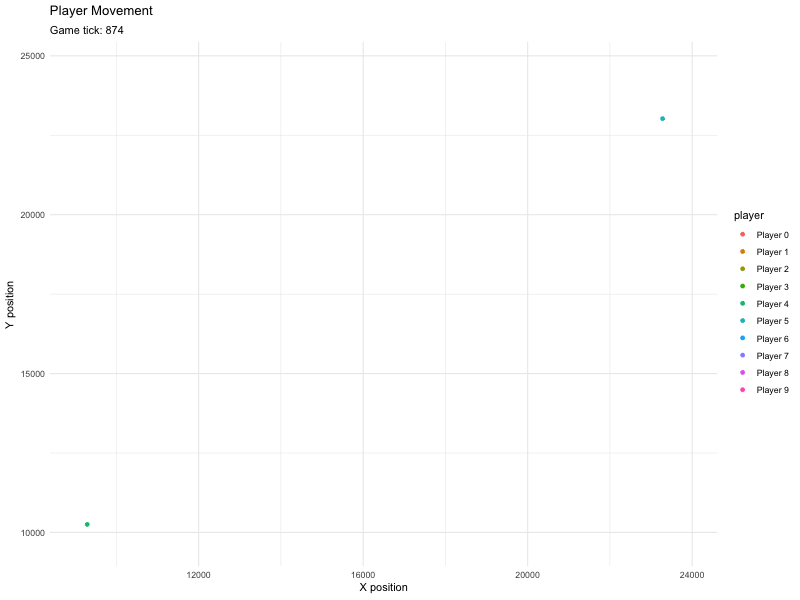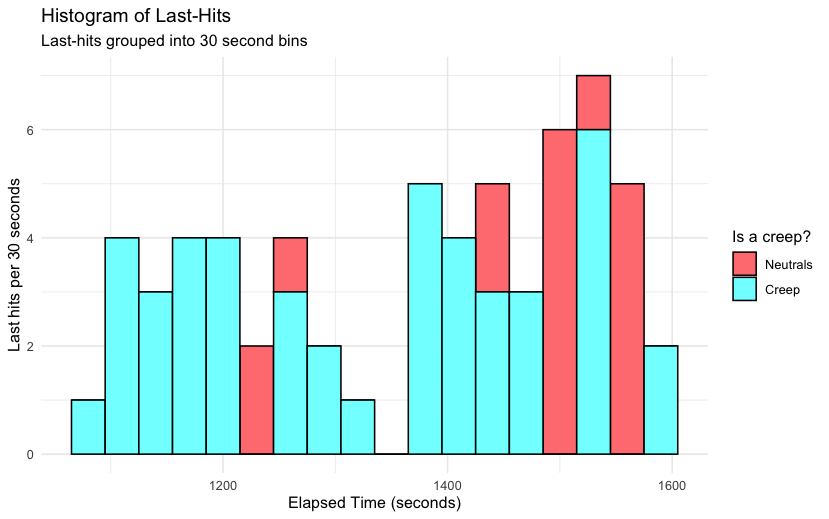I’m excited to share the areas where I am practicing my newly acquired project management skills. If this interests you a lot, you should definitely subscribe to the waitlist so we can keep you updated!
First off, I want to further introduce myself more carefully so that you can understand my personal goals and direction.
Introduction: Darren, video games, growth, and technology
My name is Darren, and (as of this post) I have almost a decade of professional software engineering experience and over two decades of programming experience. I learned to program when I was a lot younger when I started off playing video games and wanting to learn how to build them. These passions formed my deep desires: a love for learning and generously sharing what I learn, which eventually were the seeds in my pursuit of innovating in EdTech. Fast forward two decades, I’m now a tech consultant taking a year-long break as an MBA student, learning to build his own businesses. I currently have two businesses I am developing, of which one of them is what this project management deliverable is for.
My media agency, TheGamingClassroom, operates social-media channels which I use as a driver for my other business, Tome.gg, which is a coaching and mentoring platform for mid- to senior-level software engineers. I decided to focus on a substantial project that has challenges that I’ve been reflecting on for a while now. Coaches, mentors, and consultants no matter the industry encounters an eventual hard limit.
Problem definition: Service-oriented businesses struggle with scaling
Coaches and mentors are very much like tech consultants: they sell their time to understand, assess, diagnose, support, and advise their clients to achieve the change or results they set for themselves. The problem in a consulting business is that the revenue model is designed such that you only earn when you do the work: i.e. you eat what you kill. This makes consulting (or coaching) a time-expensive business that prevents individuals from their own growth or scaling their business into something more profitable. As observed in other service-oriented businesses, the challenge is developing products or productized services that enable the business to generate revenue separate from the time constraints of the people rendering the service.
Having understood the constraints of a service-oriented coaching business, how might we enable coaches and mentors to scale their operations in the niche that is DotA 2? But first- what is DotA 2?

DotA 2, $40M[1] Prize Pool at The International, and its coaching scene
We begin first with a short introduction to DotA 2.
- “Dota 2 is a 2013 multiplayer online battle arena (MOBA) video game by Valve. The game is a sequel to Defense of the Ancients (DotA), a community-created mod for Blizzard Entertainment’s Warcraft III: Reign of Chaos. Dota 2 is played in matches between two teams of five players, with each team occupying and defending their own separate base on the map. Each of the ten players independently controls a powerful character known as a “hero” that all have unique abilities and differing styles of play. During a match players collect experience points and items for their heroes to defeat the opposing team’s heroes in player versus player combat. A team wins by being the first to destroy the other team’s “Ancient”, a large structure located within their base.” (Wikipedia contributors, 2024)
It’s basically one of the most old-school virtual alternatives to a 5v5 basketball game, but digital. I started playing DotA 2 back in 2006, and as an avid and ex-competitive DotA 2 player, I love watching videos on YouTube and TikTok, seeing professional DotA 2 players compete and watching smurfs beat on scrubs (read: smurfs are high-rank players playing with a lower-ranked account, thus imbalancing the matchmaking with scrubs, who are lower-tiered players).

Did I mention that DotA 2 is also the most lucrative e-sports, raising a whopping $40M as a prize pool for The International held every year?
- “Dota 2 has a large esports scene, with teams from around the world playing in various professional leagues and tournaments. Valve organizes the Dota Pro Circuit, which are a series of tournaments that award qualification points for earning direct invitations to The International, the game’s premier tournament held annually. Internationals feature a crowdfunded prize money system that has seen amounts in upwards of US$40 million, making Dota 2 the most lucrative esport.” (Wikipedia contributors, 2024)
The DotA 2 scene is a very lively ecosystem, with many fans building up the hype for every year’s gameplay. Participating in this ecosystem are the professionals (coaches and players) who put together a team and compete in the Pro Circuit.
On the other hand, there are also a variety of DotA 2 coaches that produce amazing content online, teaching the fundamentals of DotA 2 for many of the newer players (or old players that haven’t progressed, like me). Their teaching styles are varied, and their content on YouTube are a mix of entertainment and education, which I believe are the characteristics of the next level innovations in education into the future.
From a business standpoint, these coaches have a niche market they are focused on. On the lower tier coaches, each of them generate a total revenue of up to $15-$20k. On the higher tier which include actual professional DotA 2 players providing coaching services, they generate a total revenue of up to $1M-$3M depending on their popularity, professional history, and reach (These are conservative estimates… one of them was estimated at $6M).
With that brief introduction to DotA 2, I’ve selected these professional and non-professional coaches, mentors, and content creators on YouTube as my target customers. How might we enable them to scale their business better?
I conducted a brief tech research and found necessary tools to analyze DotA 2 gameplay matches automatically. I was then able to parse raw replay files, produce a simple analysis pipeline using R, and generate artifacts (like a simple mini-map of player positions over time) as a prototype for what I decided to call TheGamingClassroom’s DotA 2 Gaming Replay Service.

Figure 1. DotA 2 Minimap Replay, demonstrating player’s movement over time. Generated with R. This was the first version of the player movement analysis.

Figure 2. DotA 2 Minimap Replay. This is the next version of the player movement analysis, showing gameplay for the first 10 minutes of the game. With clustering, we can do more specific laning analysis, analyzing hero matchups more carefully.

Figure 3. Creep last-hits by hero Furion (or his treants), during the laning stage.
DotA 2 Gaming Replay Service
The objective of this Replay Service is to allow DotA 2 players to upload their replay files, get their gameplay data automatically parsed using the specific analysis method of their preferred coach. I conducted a brief market research on this opportunity, but currently undergoing deeper investigation in opportunities not only for personalized coaching but a replay service designed for content creation as well. In building this platform, costs can be further reduced by strong marketing partnerships and promotions.
This project targets Dota 2 professional and competitive players, offering a replay analysis service for their DotA 2 games. Looking at the market for DotA 2 replay services, the market has DotABuff, a service that parses all of your game replays for only $7 per month, and has no video replays surrounding a player’s actual kills or deaths. Furthermore, the analysis is statistics-based and up to the user to interpret, rather than coach-specific, personalized, and granular.
Project Planning, Marketing and Sales Targets, and Financials
The project timeline is scoped for the whole size of the investment, beginning with its development from May 2024 to September 2024, and sales starting in October 2024 and onwards. From our market research, we anticipate engaging around 80% of our initial estimate of total coaches in the market by March 2026. A significant portion of the budget will go towards developing the software platform and marketing, which are crucial for business operations. If you’re interested in the financial analysis and forecasting as an investor or partner, feel free to connect with me on LinkedIn.
Project Complexity
One of the key complexities is gaining traction within the competitive Dota 2 community. Establishing partnerships with coaches is crucial, as their endorsement will directly influence the adoption rate among players. Given the niche market, the challenge lies in convincing coaches that our service adds value beyond existing tools like DotaBuff. Moreover, penetrating a market with such a specific target audience requires precise and effective marketing strategies tailored to both coaches and players.
A significant risk involves accurately predicting the demand for the service. Comprehensive market research needs to be conducted to validate the assumptions about the potential customer base and willingness to pay for the service. Misjudging the market demand could lead to significant financial and operational setbacks.
Developing a platform that seamlessly integrates replay analysis with user-friendly interfaces presents technical challenges. The software needs to be robust, scalable, and capable of handling significant volumes of data without compromising on speed or user experience. Although we won’t be providing high-quality video playback, we would be generating artifacts that provide detailed information that can save coaches (both variety streamers and professional coaches) a lot of time in deciding what aspects to focus on in their coaching sessions.
The project’s initial investment is substantial, and the financial viability hinges on achieving a critical mass of subscribers. The financial risk is compounded by the variability in the adoption rate and the potential fluctuations in the gaming market. A detailed financial model and contingency planning are essential to mitigate these risks.
While currently, there are no direct regulatory challenges associated with this project, the ever-changing landscape of digital content and online platforms could pose future compliance issues. Staying ahead of potential legal challenges related to online gaming services and data privacy is crucial.
Engaging with multiple stakeholders including players, coaches, and potential investors requires clear communication and management. Each group has distinct expectations and interests in the project. Managing these expectations and aligning them with the project goals is a complex task that requires adept stakeholder management skills.
Ensuring that the target user base, which may vary widely in terms of technological proficiency, can easily adopt and use the platform is essential. The user interface must be intuitive and the learning curve minimal to maximize user engagement and retention. This will likely be the area of most complexity when it comes to tech execution, because we can develop better user experiences for gamers, but it will be a problem if we spend too much money trying to do this. Failing to do so, however, will mean people will not use the service.
Risk Mitigation and Forecasting through Project Management
In terms of project management tools, traditional frameworks like Gantt charts generated by Smartsheet was indispensable for me when it came to business planning for the system development and cost projections. However, the intricacies of marketing strategies, which will need to be very adaptive, might exceed the capabilities of these tools necessitating more sophisticated approaches. Looking ahead, tools like Smartsheet will be essential for managing such an extensive project- not just for the tech system development but even for our marketing and operations. Its ability to provide detailed projections and timelines will help in navigating the complexities over the next 18 months.
In planning how to mitigate risks, Stakeholder Maps and Risk Maps would be crucial in ensuring we cater to and address concerns and issues that different stakeholders might raise. As a tool, it also helps us accurately understand what is valuable to each stakeholder and is a great communication tool across the team.
This project not only aims to innovate within the gaming industry but also serves as a great opportunity as a case study for innovation into the professional development industry in doing the same things: enabling coaches and mentors to scale their operations, making education a more profitable and sustainable business for teachers, educators, and mentors alike.
As I’ve learned in open-source technologies as a software engineer, not everything has to be built from scratch- but it is important to reward and align incentives for each stakeholder.
If you’re interested in the project, join our waitlist so we can keep you posted on our progress!
References
- Wikipedia contributors. (2024, May 3). Dota 2. In Wikipedia, The Free Encyclopedia. Retrieved 23:08, May 6, 2024, from https://en.wikipedia.org/w/index.php?title=Dota_2&oldid=1222110354
- Sapalo, Darren. (2024b, April 28). TGC’s Market Research on DotA 2 coaches and Replay services. [Unpublished manuscript]. Access negotiable upon request.
[1] All financial amounts are in the US Dollar currency.